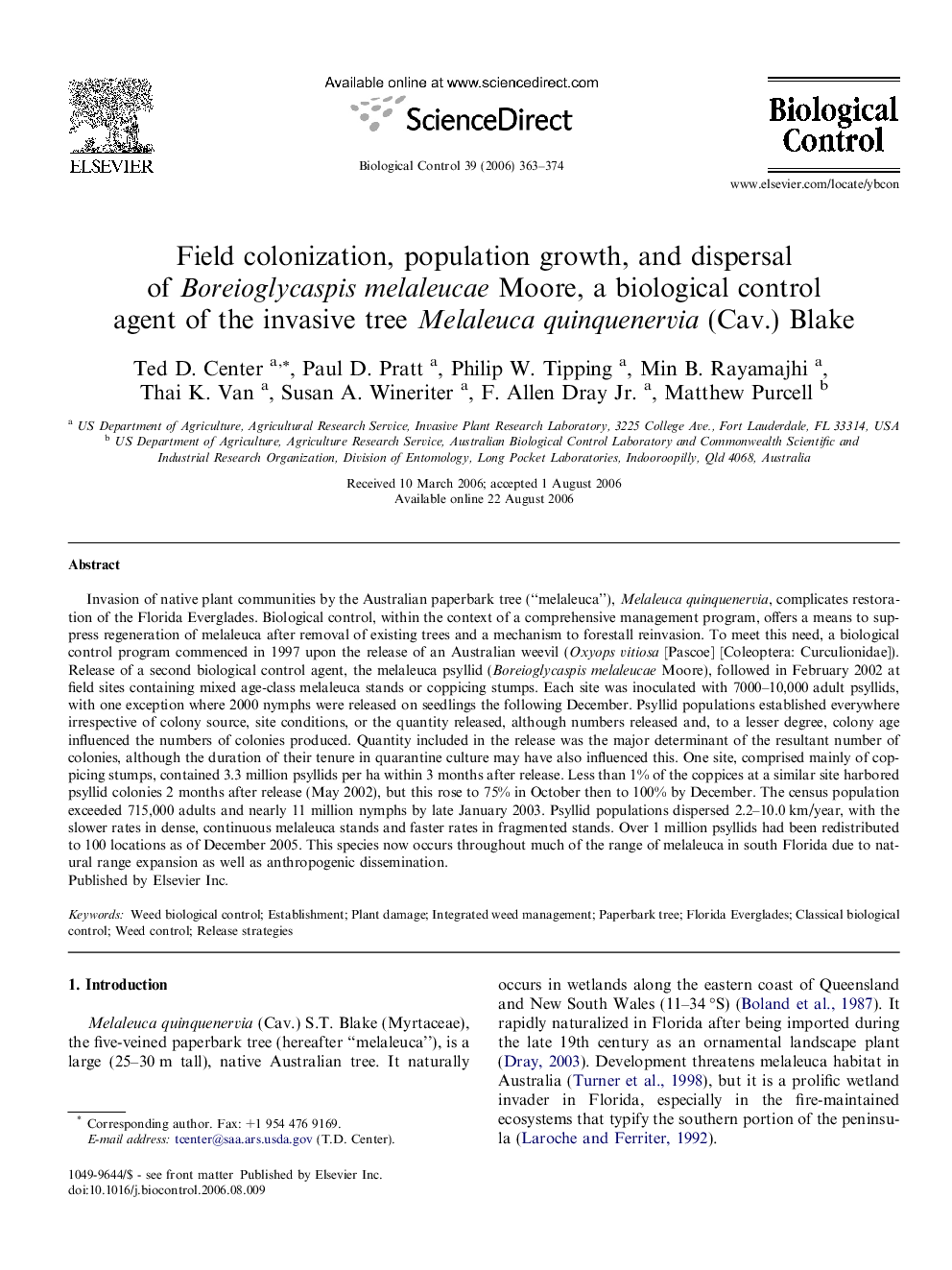| کد مقاله | کد نشریه | سال انتشار | مقاله انگلیسی | نسخه تمام متن |
|---|---|---|---|---|
| 4505384 | 1321142 | 2006 | 12 صفحه PDF | دانلود رایگان |

Invasion of native plant communities by the Australian paperbark tree (“melaleuca”), Melaleuca quinquenervia, complicates restoration of the Florida Everglades. Biological control, within the context of a comprehensive management program, offers a means to suppress regeneration of melaleuca after removal of existing trees and a mechanism to forestall reinvasion. To meet this need, a biological control program commenced in 1997 upon the release of an Australian weevil (Oxyops vitiosa [Pascoe] [Coleoptera: Curculionidae]). Release of a second biological control agent, the melaleuca psyllid (Boreioglycaspis melaleucae Moore), followed in February 2002 at field sites containing mixed age-class melaleuca stands or coppicing stumps. Each site was inoculated with 7000–10,000 adult psyllids, with one exception where 2000 nymphs were released on seedlings the following December. Psyllid populations established everywhere irrespective of colony source, site conditions, or the quantity released, although numbers released and, to a lesser degree, colony age influenced the numbers of colonies produced. Quantity included in the release was the major determinant of the resultant number of colonies, although the duration of their tenure in quarantine culture may have also influenced this. One site, comprised mainly of coppicing stumps, contained 3.3 million psyllids per ha within 3 months after release. Less than 1% of the coppices at a similar site harbored psyllid colonies 2 months after release (May 2002), but this rose to 75% in October then to 100% by December. The census population exceeded 715,000 adults and nearly 11 million nymphs by late January 2003. Psyllid populations dispersed 2.2–10.0 km/year, with the slower rates in dense, continuous melaleuca stands and faster rates in fragmented stands. Over 1 million psyllids had been redistributed to 100 locations as of December 2005. This species now occurs throughout much of the range of melaleuca in south Florida due to natural range expansion as well as anthropogenic dissemination.
Journal: Biological Control - Volume 39, Issue 3, December 2006, Pages 363–374